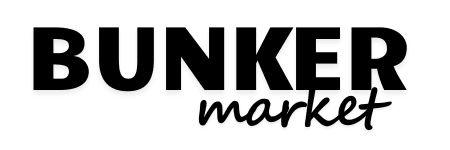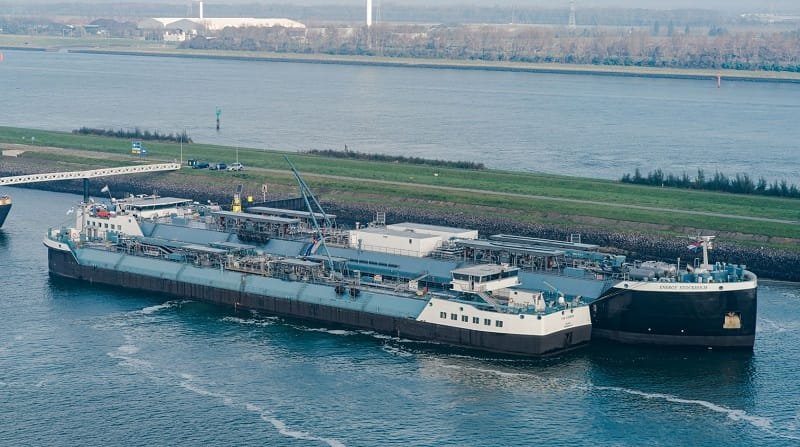In a significant milestone for the maritime industry, Shell Marine recently christened its newest LNG bunker barge, the Energy Stockholm, marking a major step in the company’s commitment to sustainable marine fuels. With a capacity of 8,000 m³, Energy Stockholm is now the largest inland LNG bunkering vessel in Europe. The christening took place on 13th November 2024, by its godmother, Saheera Ahmad, Head of Business Development – Marine LNG for Shell. followed by the vessel’s first loading operation on 15th November 2024, when Shell officially took delivery of the barge at the GATE terminal.
This new addition to Shell’s fleet is set to play a pivotal role in meeting the growing demand for LNG bunkering along Europe’s key ports. The Energy Stockholm will service major maritime hubs including Zeebrugge, Antwerp, Rotterdam, and Amsterdam. It has already been seen conducting operations alongside its “little sister,” LNG London, at the Port of Rotterdam, further solidifying its role within Shell’s expanding LNG bunkering network.
Shell is strategically positioned to support a rising tide of LNG dual-fuel ships entering service across the globe. As noted by some of Shell’s largest customers, the number of LNG-powered vessels entering the market is increasing rapidly, with new ships launching every month. To meet the growing demand, Shell’s LNG bunkering network is now bolstered by a fleet of 12 bunker barges, operating across 26 locations, providing the reliable and sustainable fueling solutions that customers require for their expanding fleets.
Energy Stockholm is part of Shell’s broader strategy to offer cleaner marine fuel solutions and to support the shipping industry’s transition towards net-zero emissions by 2050. LNG, as a lower-carbon fuel, is seen as a critical step in this transition. Compared to traditional marine fuels, LNG reduces greenhouse gas emissions by up to 23%, depending on the engine type. Additionally, LNG’s ability to reduce sulfur oxides and particulate matter makes it an ideal fuel for reducing air pollution from shipping operations.
Beyond conventional LNG, Shell is also exploring Bio-LNG and Synthetic LNG as part of its long-term strategy to decarbonize the maritime sector. Bio-LNG, produced from renewable biogas, can be mass-balanced within the gas grid, and its production is expected to scale up in the coming years. Meanwhile, Synthetic LNG, which is made from renewable hydrogen and CO2, is currently under development and promises to further reduce emissions in line with the industry’s 2050 net-zero target.
With the world’s largest LNG bunkering network, Shell Marine concludes over 2,000 successful LNG bunkering operations across 12 countries, delivering fuel to ships in numerous key trading routes. This extensive network is supported by Shell’s global LNG business, including significant shipping, storage, and regasification assets, ensuring a stable supply of LNG for the marine industry.
In addition to its robust infrastructure, Shell’s commitment to supporting the shipping sector in its decarbonization efforts is reflected in its Shell Sectors & Decarbonisation (S&D) business. This division works closely with customers in hard-to-abate industries, providing tailored solutions that help them reduce emissions and transition to cleaner energy sources.
As part of Shell’s vision to become a net-zero business by 2050, the company continues to lead the way in providing cleaner energy solutions to the shipping industry. With the addition of Energy Stockholm to its fleet, Shell is well poised to meet the evolving demands of the maritime sector, helping to fuel the transition to a sustainable future.
Energy Stockholm: Advancing LNG Bunkering with Cutting-Edge Technology and Sustainability
The vessel, owned and operated by LNG Shipping—a joint venture between Victrol and Groupe SOGESTRAN—will operate under a long-term charter agreement with Shell Western LNG B.V., supporting LNG bunkering in the ZARA region (Zeebrugge, Antwerp, Rotterdam, and Amsterdam).
Equipped with an advanced LNG cargo handling system, the Energy Stockholm can bunker a wide variety of vessels, from ferries to large container ships, and accommodates both traditional and membrane-type tanks. This new addition marks LNG Shipping’s second inland LNG bunker vessel chartered to Shell, following the LNG London, launched in 2019 with a capacity of 3,000 m³.
David Patron, Commercial Director for Oil/Chemicals/Gas at Sogestran, highlighted the vessel’s cutting-edge features “The Energy Stockholm is equipped with a hybrid-electric dual-fuel propulsion system powered by pure gas and diesel generators, compatible with bio-diesel. It can recover cargo boil-off gas as fuel and is the first inland LNG bunker vessel to incorporate a 500 kWh battery pack and shore power connection, allowing up to 30 minutes of battery-powered navigation.”
With its energy-efficient technologies and ability to reduce emissions, the Energy Stockholm sets a new standard for inland LNG bunkering, reinforcing Shell’s commitment to cleaner marine fuel solutions and advancing sustainable practices in the maritime industry.
About Shell Marine
Shell Marine delivers integrated solutions across the entire marine value chain, supporting over 10,000 vessels in more than 700 ports across 62 countries. With a team of experts dedicated to decarbonizing the maritime industry, Shell is helping customers navigate the complex journey toward sustainability and net-zero emissions. Through a combination of LNG, Bio-LNG, and future synthetic LNG solutions, Shell continues to drive innovation and provide cleaner, more efficient fueling options for the shipping industry.

